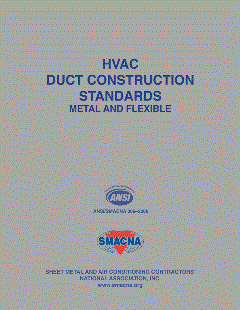Although most ductless systems register surprisingly low noise levels in the home, they have created quite a loud buzz in the HVAC industry. Residential ductless systems are much more popular in other countries throughout the world; however, the U.S. is catching on as the awareness of their benefits continues to grow.
DUCT LESS, GET MORE
“We’re 100 percent ductless and mini split oriented,” said Randy Scholnick, director of sales, Sirius Mechanical Inc., Moreno Valley, California. “About two-and-a-half years ago, we just stopped doing furnace changeouts.”
The company made the decision based on many factors, but for Sirius, ductless HVAC required less work, generated more money, and provided more comfort and cost savings for their consumers.
Technicians installing the equipment benefit because they no longer have to work in attics and crawl spaces. They’re generally installing wall-mounted units in the conditioned spaces and running drain lines and refrigerant lines out to a single outdoor unit. This method takes significantly less time to install.
According to Scholnick, technicians can install a three- or four-zone system in one day. Sometimes, a second day is required to finish up while conventional system installations — new furnaces, new air conditioners, and new or rerouted ductwork — can take several days.
“The labor savings is significant, and our material costs are a lot less,” said Scholnick.
On the consumer side, the initial cost of a ductless system is much higher than a centralized system.
“But where that kind of cancels out in a very short period of time is the operational cost, because the indoor units run on the equivalent of a 75 W lightbulb,” he said.
In addition to the cost savings, eliminating all the ductwork frees up cabinet space for the furnace, eliminating all the centralized ductwork that usually has one thermostat dictating temperatures throughout zones that are 8°-10°F warmer or cooler than where the thermostat is installed, and offers fan coils in the rooms being conditioned, which means the units reach set temperatures very quickly, Scholnick said. “So, all those factors kind of pointed in the direction that this is where the world is going.”
Scholnick said his company doesn’t even do any advertising because the word-of-mouth referrals are so high from customers who have made the switch to ductless and experienced the decrease in energy bills in combination with an increase in comfort.
Approximiately 5 percent of San Antionio-based Champion AC’s business is residential ductless, according to Benjamin Hubbert, president of the company.
“That might not sound like much, but we have doubled our ductless installs the last two years in a row,” he said.
The increase in marketing by manufacturers is certainly helping consumer awareness, noted Michael Rosenberg, president, Rosenberg Indoor Comfort, San Antonio.
“We’ve see an increase in the amount of mini-split requests and installations,” he said. “Mini splits have become more efficient over time, and there are more players in the industry.”
In addition to the increased efficiency, ductless manufacturers have also improved the functionality of these systems, making the whole-house approach possible in nearly all climate zones.
“Mitsubishi’s hybrid heating system will maintain 100 percent effectiveness in below-zero temperatures,” said Scholnick. “It’s now available in multi-branch systems, so for homes that couldn’t do this before, a whole-house approach is now very doable.”
WHERE DOES IT GO?
Because of their energy efficiency, ductless systems are an ideal solution for nearly any home. However, there are a few areas contractors feel consumers can benefit most from this technology.
“Ductless works best in home additions, such as sun rooms, additional bed rooms, and man caves,” said Hubbert. “We have also installed ductless units in historical homes that didn’t have the ceiling heights for conventional split systems.”
Rosenberg acknowledged there are a few instances where ductless systems are the best solutions for consumers’ issues, even if they are not interested in a whole-house approach.
“Mini-split systems work best in garages that have been turned into studios or rooms, homes that currently have window units for cooling, structures where there is very little room in the attic to run conventional ductwork and the client wants to remove the window units, master bedroom suites that need their own dedicated systems, and closets used for computer or telephone rooms in larger homes,” he said.
Ductless is an ideal solution for these situations because of zoning control.
“If you are not using a particular room or rooms at a specific time, but you are using another room, you only have to run the mini split that is cooling the occupied area,” Rosenberg said. “This can result in energy savings.”
Ductless benefits don’t end there though — these scenarios might be the most popular or ideal situations for ductless systems, but they can work efficiently almost anywhere.
“Mini-split systems can be used in every application as long as there is a source of power and it is sized correctly for the room,” said Rosenberg.
Scholnick has found the same to be true, claiming that 95 percent of the sites he evaluates can accommodate a ductless system.
“It’s really rare to not be able to install a ductless system, and even then, it’s usually more of a preference thing,” said Scholnick. “The ductless system becomes much easier to do than conventional systems here in California, especially on the coast, because you don’t have a lot of crawl space or you’ll have no attic in some cases.”
With nowhere to run the ductwork, the ductless system becomes the only go-to option.
Wall-mounted units are often the least expensive option for homeowners; however, some people don’t like the way they look.
“They just don’t want to see the thing on the wall,” said Scholnick. “So, in some cases, you could do a ducted system and just do a ducted fan coil and have minimal ductwork that controls that zone or maybe two rooms, and if you have a crawl space, you can put the fan coil in the space with a shorter duct run to each of those rooms. The other option is a ductless, four-way ceiling-recessed cassette,” he said. “So, if it’s just that they don’t want to see that wall mount, then we have to find an alternative to that, and, in some cases, you just can’t do that. If there’s no crawl space to put a ducted system in for one or two zones, then that’s kind of off the table, I guess. They have to go back to a conventional approach.”
GET IN THE ZONE
If ductless systems really do so much for both the contractor and the consumer, then why don’t we see them in every home? The answer comes down to two simple roadblocks — consumers are intimidated by the price, and contractors are intimidated by the sales pitch.
“We do have a lot of client inquiries for mini splits that come from the internet,” said Rosenberg. “The only negative is the perception by some clients that mini splits are really cheap — the internet is flooded with mini splits sold at a cheap price.
“When we get a phone call from a potential client, we go out there, look at the application, give them a quote for full installation, and they say they found something much cheaper online,” he added. “We combat that with the fact that we will be professionally installing their system, and we stand behind it.”
Rosenberg said his company educates clients about ductless systems and, more specifically, mini splits when there is a good application for them; however, the company does not actively advertise ductless sales. This seems to be the case with many contractors out there.
“In our market, they are used only in specialty applications, such as bonus rooms, additions, sun rooms, pool houses, etc.,” said Todd Kletz, owner and general manager, One Hour Heating & Air Conditioning, Virginia Beach, Virginia. “Their use is so limited that it comprises less than 1 percent of our business and, in turn, 0 percent of our attention.”
However, that’s not always going to be the case according to Scholnick. “As awareness is raised on what ductless can do and how it achieves the quick cooling and heating and dehumidification effect, it’s going to start really picking up countrywide.
“Part of what’s holding back ductless is there’s so many old-school contractors,” he added. “If the consumer calls a contractor, and their historical perspective has been central furnace and a/c systems, then that’s what they’re going to pitch — a lot of contractors don’t want to go out of their comfort level.”
So, although the shift may be a slow one, Scholnick believes the industry is leaning toward ductless technology in such a way that it may become the dominant player in the residential HVAC market before we know it. He urges contractors to incorporate the ductless pitch as a main objective of their sales strategy.
“I’m noticing more and more contractors in certain places around the country are starting to feature ductless only. They’re just like us,” said Scholnick. “They just won’t do conventional because they see the benefits of it [ductless] to the end user, and they also see the benefits to the installing staff.
“These techs can literally put in a system so quickly and neatly and have immediate results,” he continued. “It’s pretty dramatic. So I take it that this ductless world is not going to stop any time soon or decline — it’s just going to keep increasing as people start to understand what it is and how it does what does.”
Publication date: 8/7/2017
Want more HVAC industry news and information? Join The NEWS on Facebook, Twitter, and LinkedIn today!










